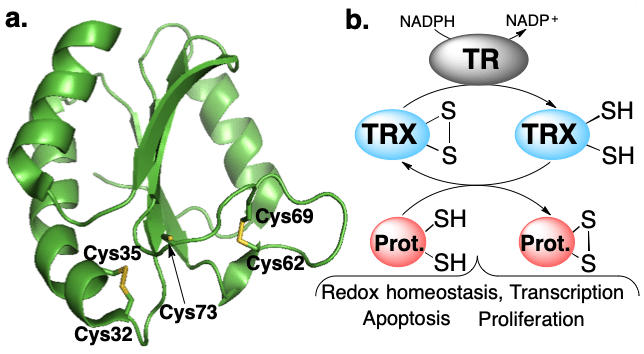
Development of Anti-TRX-1 agents for the treatment of cancer using chemical protein synthesis
Cancer is defined as a group of diseases in which the cancerous cells have the ability to proliferate in an uncontrolled manner and to metastasize to other organs. It has been established that tumor cells are usually associated with elevated levels of antioxidant systems, especially the thioredoxin system. Thioredoxin system composed of thioredoxin reductase (TR), NADPH and the protein thioredoxin (TRX). This system plays a major role in many cellular functions, including maintaining cellular redox homeostasis, control of transcriptional factors, DNA synthesis, stimulating cell growth and inhibiting apoptosis (Figure 1). However, the cytosolic thioredoxin-1 (TRX-1) is overexpressed in many solid tumor cancer cells and found to augment the carcinogenic process by enhancing proliferation, inhibiting apoptosis and increasing angiogenesis in cancer cells. Hence, targeting TRX-1 is a valuable approach to cancer drug development. In this research proposal, inhibitors against cytosolic TRX-1 will be developed by chemical protein synthesis using two techniques: solid-phase peptide synthesis (SPPS) and native chemical ligation (NCL).

Powered by Eventact EMS